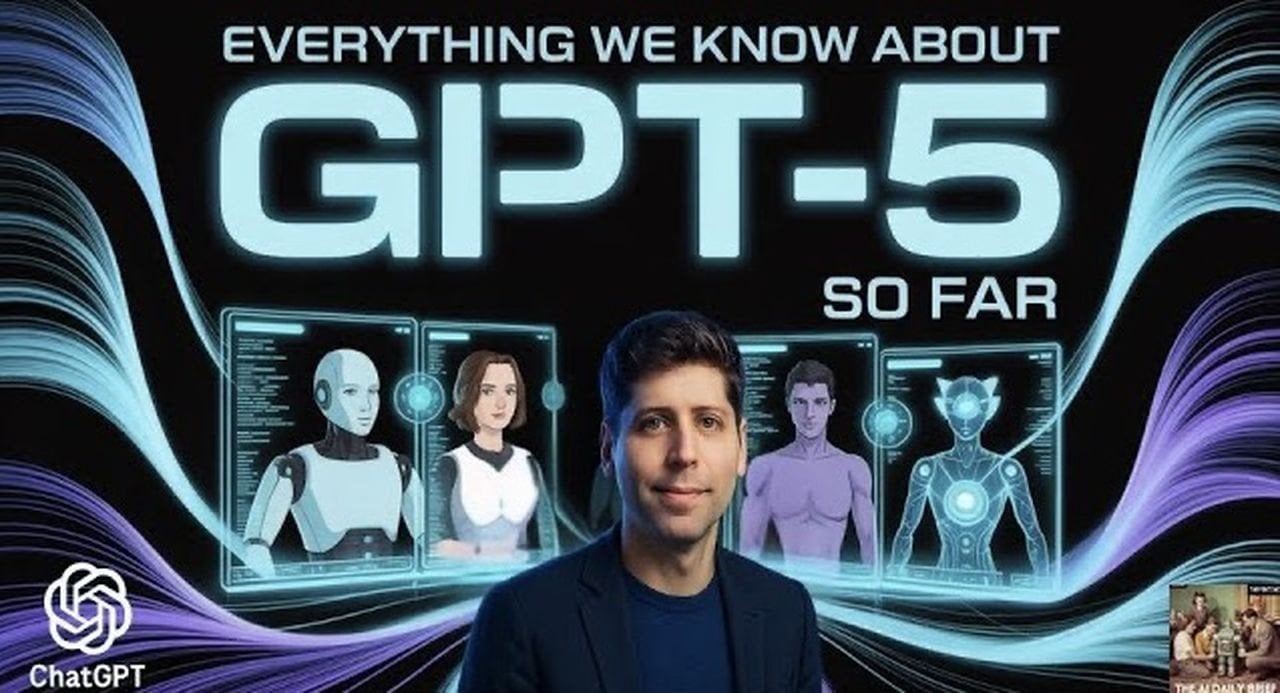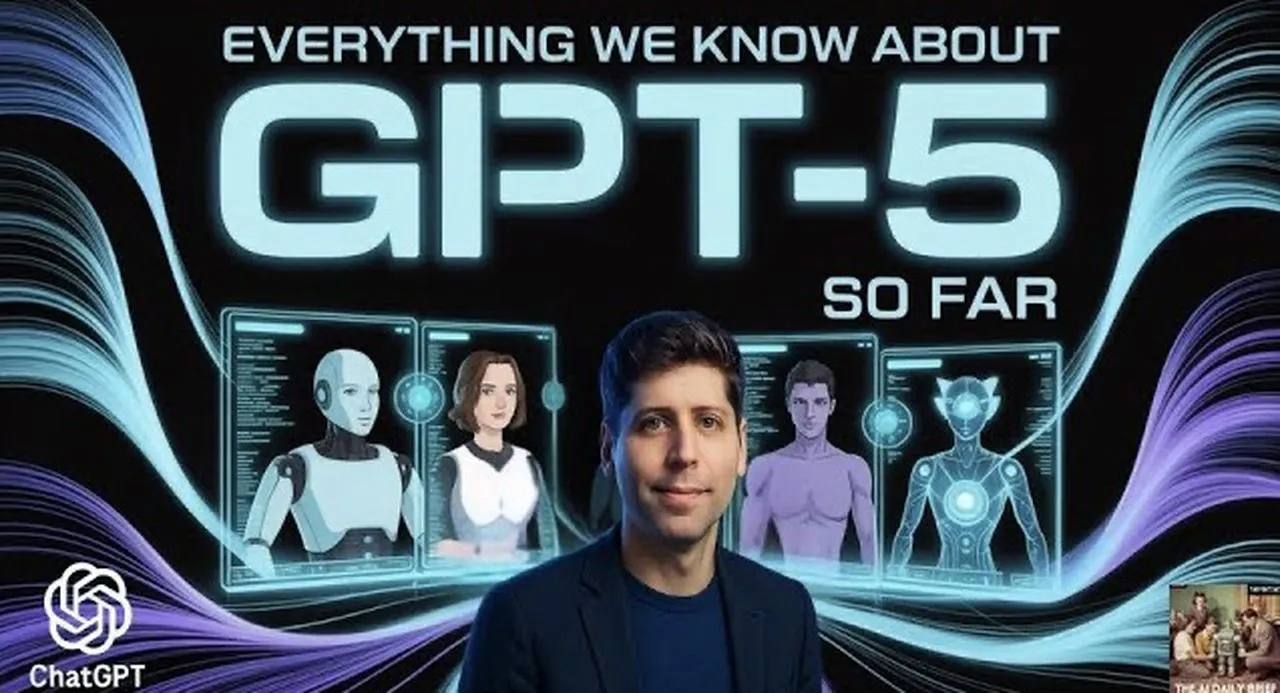Everything We Know About ChatGPT 5 So Far – Geeky Gadgets

Geeky Gadgets
The Latest Technology News
By 
What if the next leap in artificial intelligence wasn’t about flashy breakthroughs but about making the extraordinary feel effortless? That’s the promise of ChatGPT 5, OpenAI’s latest step forward in the AI race. While it may not rewrite the rules of AI, it’s poised to refine them in ways that could profoundly impact how we interact with technology. Imagine an AI that seamlessly understands not just your words but your context—whether you’re analyzing a dense legal document, brainstorming creative ideas, or juggling multiple tasks at once. With unified architecture and expanded multimodal capabilities, GPT-5 is shaping up to be less about spectacle and more about substance, delivering a smarter, smoother, and more accessible experience for everyone.
In this detailed breakdown, AI Daily Brief explore the key features and advancements that make ChatGPT 5 a pivotal moment in AI’s evolution. From its ability to handle larger context windows for complex conversations to its dynamic mixture-of-experts architecture, this model is designed to adapt to your needs with precision and efficiency. Whether you’re curious about its enhanced memory, its potential to integrate autonomous tools, or how it stacks up against fierce competition from tech giants like Google and Meta, there’s plenty to uncover. As we delve into what GPT-5 brings to the table, one question lingers: could this be the AI that finally bridges the gap between human intuition and machine intelligence?
TL;DR Key Takeaways :
One of the most notable features of GPT-5 is its unified model architecture, which combines the reasoning-focused O-series models with the multimodal capabilities of the GPT-series. This integration eliminates the need for users to switch between different models, creating a streamlined system that consolidates multiple functionalities into one cohesive framework. For you, this means a more seamless and efficient experience, as the model can handle a wide range of tasks without compromising on performance or versatility. Whether you’re analyzing data, generating creative content, or solving technical problems, GPT-5’s unified design ensures a smoother workflow.
ChatGPT 5 is set to push the boundaries of multimodal AI, offering support for inputs and outputs across text, images, audio, and potentially video. This advancement allows you to interact with the AI in more dynamic and natural ways. For instance, you could upload an image for analysis, receive a detailed text-based report, and even get audio feedback—all within a single session. These capabilities make GPT-5 adaptable to a wide range of applications, including creative projects, educational tools, and technical problem-solving. By allowing richer interactions, GPT-5 opens up new possibilities for how AI can be integrated into everyday tasks and professional workflows.
Discover other guides from our vast content that could be of interest on ChatGPT 5.
A significant improvement in ChatGPT 5 is its ability to process larger context windows, potentially supporting up to 256,000 tokens. This enhancement allows the model to handle extensive datasets and maintain context over longer interactions. For you, this means the AI can better understand and respond to complex queries, such as analyzing lengthy documents, summarizing intricate reports, or engaging in detailed discussions without losing track of prior context. This capability is particularly valuable for professionals working on research, legal analysis, or any task requiring sustained and coherent dialogue with the AI.
To enhance efficiency and accuracy, GPT-5 is likely to adopt a mixture-of-experts (MoE) architecture. This design enables the model to allocate computational resources dynamically, activating specific “experts” for specialized tasks. For example, when addressing a highly technical query, GPT-5 could focus only on the relevant components, conserving resources while delivering precise results. This approach ensures that the model remains both fast and efficient, even during demanding tasks. By balancing speed and performance, GPT-5 is designed to meet the needs of diverse users, from casual interactions to complex, resource-intensive applications.
GPT-5 is expected to feature improved memory capabilities, allowing it to retain information across sessions more effectively. This is particularly useful for tasks requiring continuity, such as project management, ongoing research, or collaborative work. Additionally, the model is likely to integrate autonomous tools, allowing it to perform actions like scheduling tasks, retrieving external data, or executing commands without constant user input. These advancements make GPT-5 a more proactive and capable assistant, capable of handling multi-step processes and adapting to your specific needs.
OpenAI aims to simplify interactions with GPT-5 by removing the need for a model selector. This change ensures that advanced features are accessible to all users, regardless of their technical expertise. Whether you’re a first-time user exploring AI or a professional using its capabilities for complex tasks, GPT-5 is designed to deliver an intuitive and efficient experience. By focusing on ease of use, OpenAI seeks to make AI technology more approachable and practical for a wide range of applications.
Accessibility remains a key focus for GPT-5, with its multimodal capabilities designed to cater to a diverse range of users, including those with disabilities. For example, individuals with visual impairments could benefit from audio-based interactions, while those with hearing impairments might rely on text or visual outputs. These features underscore OpenAI’s commitment to making AI technology more inclusive and usable for everyone. By addressing the needs of different user groups, GPT-5 aims to bridge gaps in accessibility and ensure that its benefits are widely distributed.
The release of GPT-5 comes at a time of intense competition in the AI industry. OpenAI faces challenges from major players like Meta, Google, and other tech giants, all of whom are investing heavily in advanced AI models. As rivals develop their own innovative technologies, GPT-5 represents a critical opportunity for OpenAI to maintain its leadership. Its success will likely influence the company’s position in a rapidly evolving market, where innovation and user satisfaction are key to staying ahead.
While GPT-5 may not introduce new innovations, it is expected to deliver meaningful improvements that refine existing capabilities. For general users, this means a more seamless and powerful AI experience. For advanced users, it may feel like an incremental upgrade rather than a fantastic leap. However, the model’s focus on practical enhancements, such as larger context windows, multimodal capabilities, and improved memory, ensures that it remains a valuable tool for a wide range of applications. GPT-5’s release marks a significant milestone in the ongoing evolution of artificial intelligence, setting the stage for future advancements.
Media Credit: AI Daily Brief
Latest Geeky Gadgets Deals
Disclosure: Some of our articles include affiliate links. If you buy something through one of these links, Geeky Gadgets may earn an affiliate commission. Learn about our Disclosure Policy.